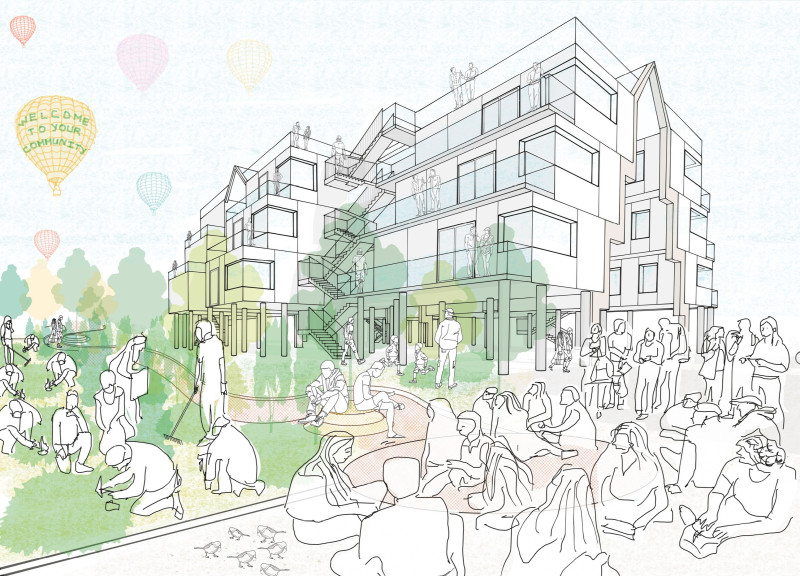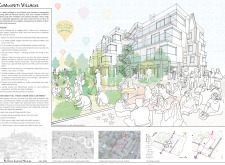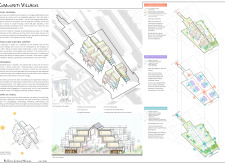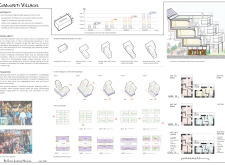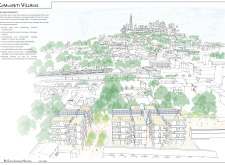5 key facts about this project
The Community Villages project is an architectural design initiative focused on affordable housing solutions in Peckham, South London. Designed to address the pressing need for sustainable living spaces, the project integrates residential units with communal facilities, creating a vibrant environment that encourages social interaction. This architecture emphasizes functionality while fostering a sense of community among residents.
Community-Centric Design Approaches
What sets the Community Villages project apart from typical housing developments is its emphasis on community engagement. The design incorporates public and semi-public spaces that serve as social hubs, allowing residents to connect and participate in shared experiences. Modular housing units are arranged to enhance visibility and accessibility, promoting interaction among neighbors. This layout supports a diverse array of residents and accommodates varying family sizes and dynamics.
The integration of adaptable spaces is another distinguishing feature. Each residential unit can be modified to suit different configurations, addressing the evolving needs of its inhabitants. This flexibility ensures longevity in both the architectural intent and the utility of the spaces.
Sustainability is a core principle in the design. The use of sustainable materials such as brick, glass, and timber not only allows for structural durability but also contributes to aesthetic cohesion. Green roofs are incorporated throughout the project, providing ecological benefits and helping to mitigate urban heat. This focus on environmental responsibility aligns the project with contemporary architectural practices that prioritize sustainability and ecological awareness.
Key Architectural Elements
The Community Villages project comprises essential architectural components that enhance its functionality. Key residential spaces are designed as modular units, which can be customized based on resident preferences. These units are connected through communal zones, which include gardens, play areas, and shared facilities. These common spaces serve several purposes, from social gatherings to recreational activities, thus reinforcing the community aspect of the design.
Retail spaces are strategically placed at ground level to create a dynamic interface with the public and to support local economic activity. This integration of residential and commercial uses contributes to the project's vibrancy and accessibility.
Moving beyond conventional housing solutions, the incorporation of community-managed gardens allows for self-sustainability and food production, enhancing local resilience. This aspect not only promotes ecological responsibility but also provides residents with opportunities for personal engagement and community collaboration.
For further insights, readers are encouraged to explore the architectural plans, architectural sections, architectural designs, and architectural ideas that detail the project. These elements will provide a comprehensive understanding of the Community Villages initiative and the innovative approaches employed in this significant housing project.


